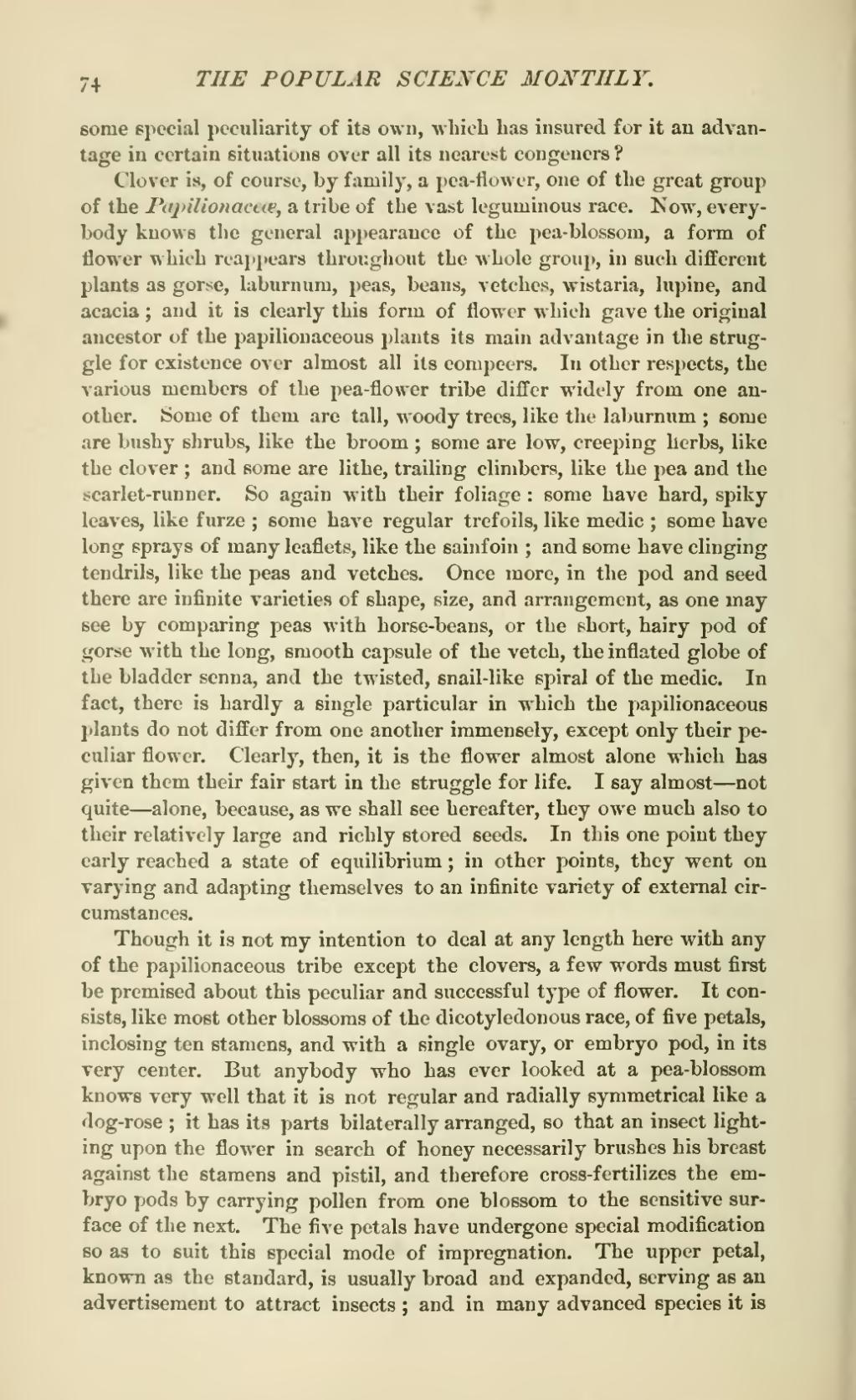some special peculiarity of its own, which has insured for it an advantage in certain situations over all its nearest congeners?
Clover is, of course, by family, a pea-flower, one of the great group of the Papilionaceæ, a tribe of the vast leguminous race. Now, everybody knows the general appearance of the pea-blossom, a form of flower which reappears throughout the whole group, in such different plants as gorse, laburnum, peas, beans, vetches, wistaria, lupine, and acacia; and it is clearly this form of flower which gave the original ancestor of the papilionaceous plants its main advantage in the struggle for existence over almost all its compeers. In other respects, the various members of the pea-flower tribe differ widely from one another. Some of them are tall, woody trees, like the laburnum; some are bushy shrubs, like the broom; some are low, creeping herbs, like the clover; and some are lithe, trailing climbers, like the pea and the scarlet-runner. So again with their foliage: some have hard, spiky leaves, like furze; some have regular trefoils, like medic; some have long sprays of many leaflets, like the sainfoin; and some have clinging tendrils, like the peas and vetches. Once more, in the pod and seed there are infinite varieties of shape, size, and arrangement, as one may see by comparing peas with horse-beans, or the short, hairy pod of gorse with the long, smooth capsule of the vetch, the inflated globe of the bladder senna, and the twisted, snail-like spiral of the medic. In fact, there is hardly a single particular in which the papilionaceous plants do not differ from one another immensely, except only their peculiar flower. Clearly, then, it is the flower almost alone which has given them their fair start in the struggle for life. I say almost—not quite—alone, because, as we shall see hereafter, they owe much also to their relatively large and richly stored seeds. In this one point they early reached a state of equilibrium; in other points, they went on varying and adapting themselves to an infinite variety of external circumstances.
Though it is not my intention to deal at any length here with any of the papilionaceous tribe except the clovers, a few words must first be premised about this peculiar and successful type of flower. It consists, like most other blossoms of the dicotyledonous race, of five petals, inclosing ten stamens, and with a single ovary, or embryo pod, in its very center. But anybody who has ever looked at a pea-blossom knows very well that it is not regular and radially symmetrical like a dog-rose; it has its parts bilaterally arranged, so that an insect lighting upon the flower in search of honey necessarily brushes his breast against the stamens and pistil, and therefore cross-fertilizes the embryo pods by carrying pollen from one blossom to the sensitive surface of the next. The five petals have undergone special modification so as to suit this special mode of impregnation. The upper petal, known as the standard, is usually broad and expanded, serving as an advertisement to attract insects; and in many advanced species it is
